The percentage of five-year-olds reaching a “good level of development” at the end of reception has increased, according to new figures.
National Early Years Foundation Stage Profile (EYFS) result data was published by the government today.
The report found that results for all three key measures used in the assessment increased this year.
Teachers carry out assessment for the EYFS profile, which is completed at the end of reception.
It was due to be scrapped as a mandatory measure, but after a government U-turn and a raft of primary assessment changes (announced yesterday), will now remain in place until at least 2017/18.
Schools Week has the key findings here:
1. Reception pupils making ‘good development’ rises
Overall, 69.2 per cent of children achieving a good level of development this year, up by three percentage points on 2015.
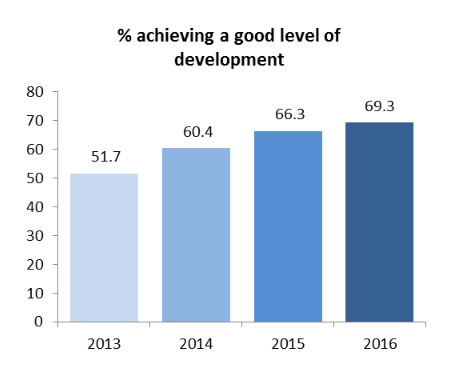
2. Actually, results have risen across all the EYFS measures
The percentage of five-year-olds achieving at least the expected level of progress in all early years learning goals also rose by 3 percentage points. So did the average total point score.
But, this year saw a smaller increases than in previous years.
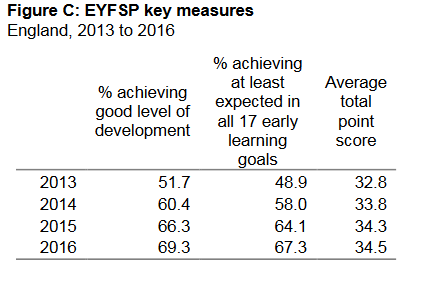
3. Girls still outperform boys, but the gap is closing
The gender gap for good development closed from 15.6 in 2015, to 14.7 this year.
Both girls and boys have improved, but boys have improved at a faster rate – the report found.
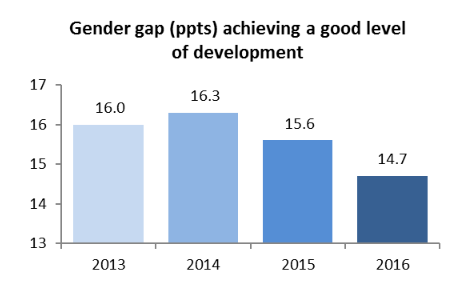
4. Although the gender gap has widened in four categories…
However when broken down by individual early learning goals, the gender gap has increased in: numbers; shape, space and measures; the world; and technology.
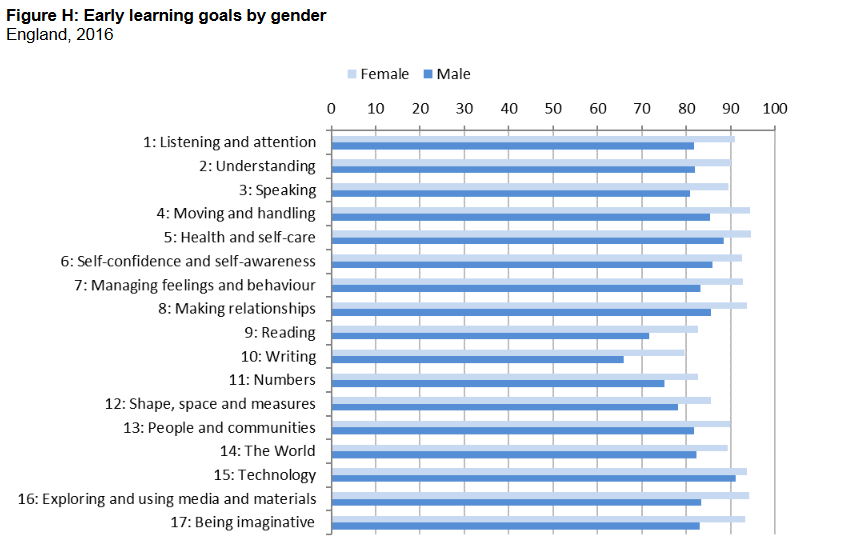
5. Pupils are more likely to fail reading and writing, but pass technology and health
The percentage of children achieving at least the expected level in each of the 17 early years learning goals is improving – but there’s variation between the goals.
The report highlights that pupils are most likely to miss out on reading, writing and numbers goals, with the most achieving technology and health and self-care.
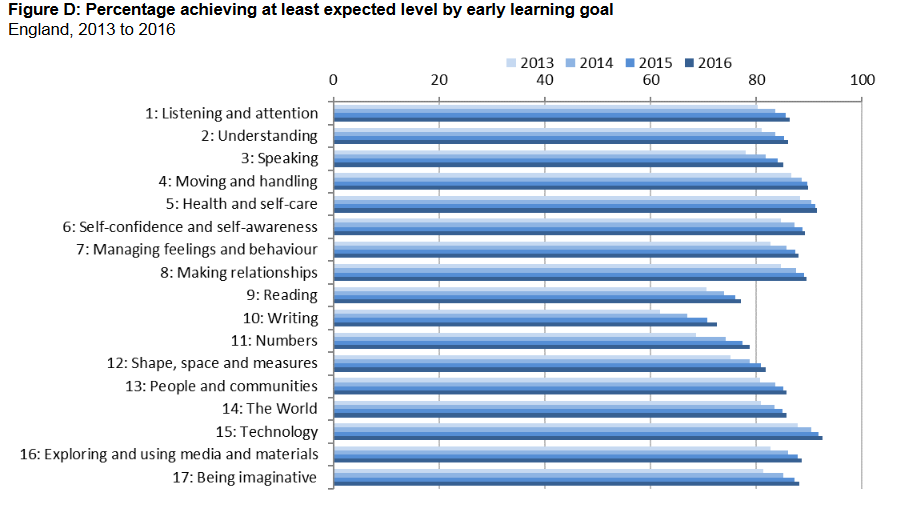
6. Turns out that 34 is the most popular mark
A mark of 34 is by far the most popular outcome. It is, also, the equivalent of a child reaching the “expected level” mark.
A sharp spike in pupils attaining the pass mark is also prevalent in phonics data published earlier this month (also teacher assessed).
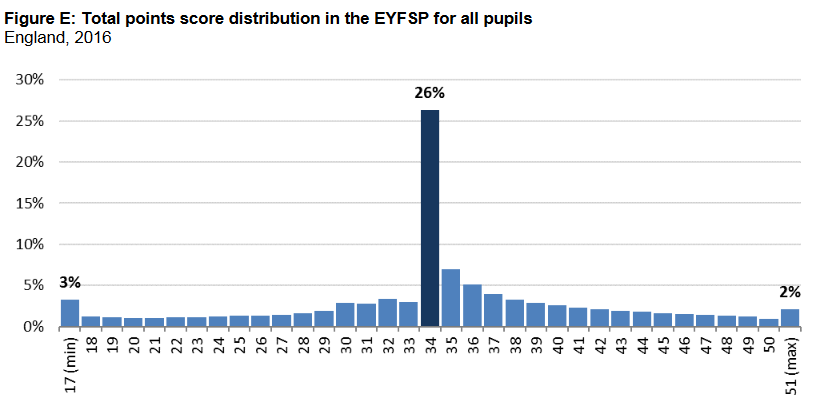
7. Regional variation is reducing
Nearly all local authority areas improved on their performance last year, the report found, with the variation between the top and bottom performers narrowing.
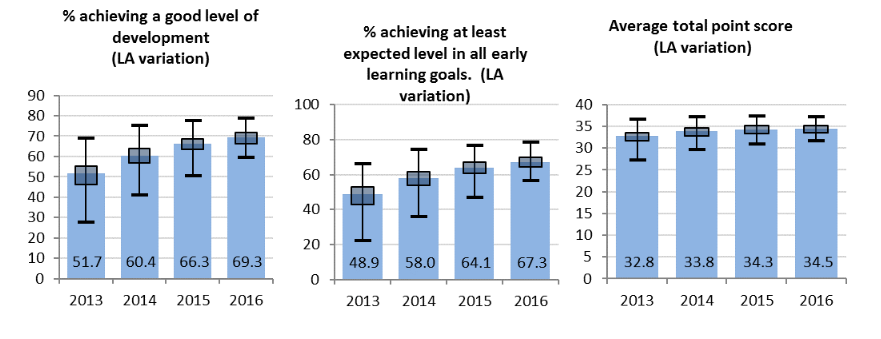
8. The lowest attaining pupils are also catching up
The data shows the lowest attaining 20 per cent of pupils continues to improve – driving a reduction in the inequality gap, which fell from 36.6 per cent in 2013, to 31.4 per cent in 2016.
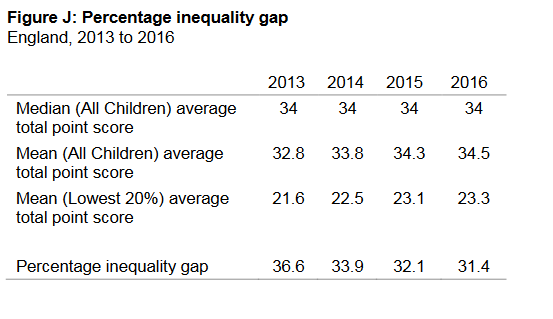

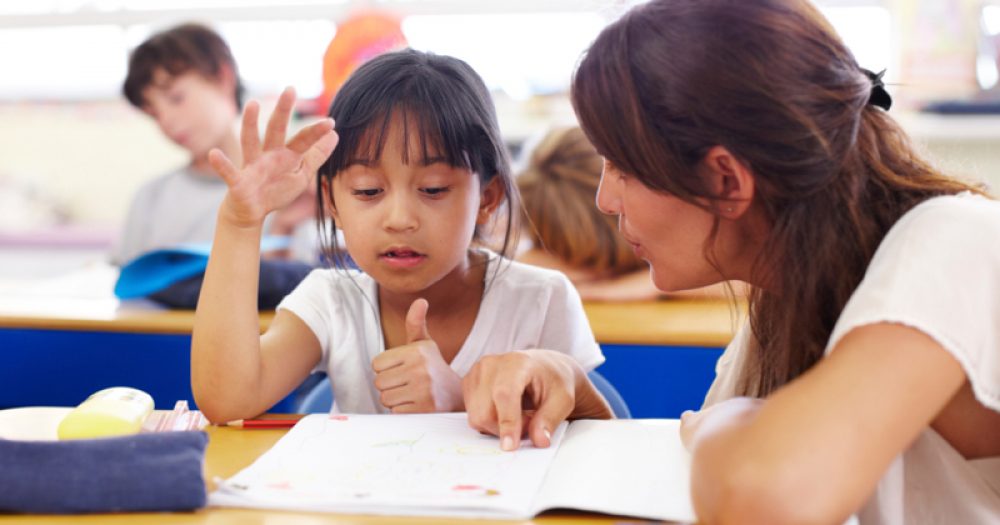

My daughter was given exceeding in one category (reading) and working towards in one category (imagination) and expected in everything else.
At the first parent’s meeting in Year 1 her new teacher told us she had a great imagination and that she was really creative in stories and art. The very thing we’d been informed that she struggled with in reception.
Yes we are collecting data, but does it actually mean anything when somebody else teaching the same child 5 weeks later has a completely different opinion?